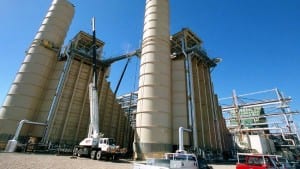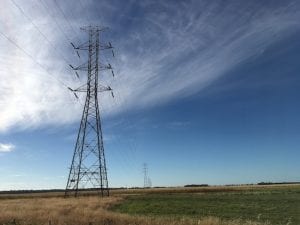The $1.5 billion Project EnergyConnect linking South Australia and NSW may not satisfy the RIT-T – the major regulatory test – any more, and despite approval by the Australian Energy Regulator , because construction costs have increased significantly since the project was first costed in 2016.
It may need more revenue than the AER would allow based on the RIT-T parameters.
It is absurd that a project like this should be four years in the planning and approval process. No wonder the costs have increased. Four years worth of benefits have already been lost. It leads to the question of whether the transmission planning bottlenecks identified by the Energy Security Board have really been improved.
The South Australian Government announced in 2017 it would provide up to $200 million of the cost but not much has been heard about that since.
The 2020 draft ISP sees Project Energyconnect as a core project. ACIL Allen has identified benefits of over A$1 billion per year in terms of electricity prices and even more if broader economic impacts are considered. These benefits are different to the least cost view required by the RIT-T.
Despite the cost increase our expectation is that the people involved, AER, Electranet, Transgrid, South Australian and NSW Governments will find a way to get the project done despite the regulatory hurdles.
The conclusion is that the RIT-T is unfit for the purpose of broadly reconfiguring transmission as the electricity system decarbonsises in Australia.The RIT-T test is too narrow in scope and has too narrow a definition of net benefit.
ESB sponsored reforms of the rules are welcome but arguably do not go far enough. Perhaps AEMO, despite all the text in the ISP could do a better job of explaining the benefits of its preferred transmission plan so that there would be less need for the RIT-T and subsequent.
This can be seen by Victoria and NSW moving away from the regulatory process and we think South Australia might follow if regulatory value and actual cost differ. It may be better if transmission investment was negotiated rather than going through formal regulatory process. For instance gas transmission expansion in Australia has been done by negotiation and as result arguably both investors and consumers are got a decent outcome.
How disappointing it is to have to write these articles
There are many interesting things happening in electricity, but for me, transmission regulation isn’t really one of them.
Unfortunately, transmission in Australia is in a mess with only minimal levels of investment in the past 20 years.
If, like me, you think that decarbonization of electricity in Australia is a necessary and achievable goal then it becomes obvious that transmission needs to be reconfigured and expanded. The extent of reconfiguration and expansion is up for debate, the underlying need for some investment is not.
The best current view of transmission planning is provided by the Integrated System Plan [ISP], a document that is updated every two years.
Despite the ISP, despite rule changes sponsored by the Energy Security Board [ESB] supposedly “el primo” of the many authorities that decide electricity policy and rules, despite support from State Goverments keen to see their own States have enough transmission to purse their own policies it remains the case that transmission planning in Australia is bogged down in a regulatory mess that no one seems able to fix.
As we previously pointed out Victoria is in part derogating (withdrawing) from the NEM to do its own transmission.
The NSW Government has stepped in on top of the regulatory process, to get renewable energy zones started in NSW, noting that this just requires intrastate transmission.
We forecast that if Project EnergyConnect, discussed below, fails to get enough revenue to cover its cost then South Australia will consider derogation as well. South Australia back in 2017 promised to contribute $200 m to this project.
In NSW Project EnergyConnect has been declared critical infrastructure, and yet four years after the first formal planning document was released the project is yet to achieve final confirmation it will be able to earn enough regulated revenue to cover its cost.
The RIT-T. A test Kafka would have been proud to write about
The problem is the regulatory test required to justify new interstate transmission has proved, in practice, to be almost impossible to satisfy, anywhere, ever.
RIT-T requires a free lunch to justify new transmission
Essentially the test requires users on both ends of the transmission line to be better off after the link is built than they were before. This sounds reasonable enough but in fact leads to endless regulatory contortions where the underlying needs and purposes are subsumed into $/bill.
Our understanding from discussion with industry participants, and I have not verified this, is that Australia is basically the only place in the Western world where inter regional transmission is developed via a formal RIT-T style. By and large inter regional links in the USA and inter country links in Europe are developed in a bilateral negotiation.
Transmission companies, and all the regulatory bodies are more or less forced to support the RIT-T test publicly because of its almost sole focus on consumer prices.
How can you not support something that won’t go ahead unless everyone is better off. A free lunch right?
Project Energyconnect and its Gordonian Knot
ProjectEnergyConnect is the proposed transmission link between South Australia and NSW. It’s a full time job just remembering the names of the various reports involved in the project but essentially the key documents are
The “Project Specification Consultation Report” [PSCR] published in November 2016, and clearly work on the project was ongoing before that. The PSCR rabbits on about why the project is needed. After a couple of years of BS about that..
This was followed by the 2018 Project Assessment Draft Report [PADR] which identifies the proponent [Electranet’s] preferred solution. The PADR has to prove that the proposed solution satisfies the RIT-T.
The PADR is submitted to the Australian Energy Regulator [AER] which performs its own analysis. In this case part of what the AER did is ask yet another consultant, in this case Frontier Economics, to pick holes in the proponents modelling.
This Frontier Economics happily did, essentially reducing the net benefits that Electranet had presented. I guess its fair play to Frontier to pick someone else’s model apart because goodness knows the assumptions in some of Frontiers own modelling have been ridiculously wrong.
I recall back in about 2014 or 2015 Frontier telling the AEMC that solar costs had fallen as far as they were likely to fall. And in many of its analyses, the answer to whatever the question is has been gas.
So Electranet’s notably simple model assumption that when EnergyConnect started up various gas plants in South Australia would close on day 1, this was a red flag to Frontier Economics.
Despite that, the project still showed that everyone was better off thus satisfying the RIT-T so the AER approved Electranet’s RIT-T proposal in January 2020. Most of us regulatory neophytes thought that was the end of the matter but it turns out that the next step is for the project to go back to the AER as a “Contingent Project application assessment”
This is the project can be added into the Regulatory Asset Base [RAB] and earn enough regulated revenue to recover its cost: “A joint contingent project application to seek regulatory approval for the efficient costs of this project to enable these costs to be recovered from consumers “
A normal person might think that after almost four years of planning, discussion and review this last step would be a formality but not so. The essential problem is that, unsurprisingly, the cost of the project has increased over the four years faster thana the benefits. Using new AEMO figures the cost may have increased by say 30% or around $300 m.
Never mind that if the project had been approved in one year it would now be built and operating and we would all be getting the benefits. Its frankly likely that at the current cost the project wont satisfy the RIT-T and so there is some doubt about whether Electranet and Transgrid, would or should go ahead with building it if they don’t get enough revenue.
In the end I think that the pressure from the ESB, the South Australian and NSW Govt perhaps including some of the South Australian Govt money, if they still have any, will see the project go ahead, but its not the sure thing one would imagine.
Energyconnect why its really needed
We start with the ISP. The map below shows Project Interconnect as a Group 1 priority. It also gives it a label “2023 renewable connection and sharing” with a whole bunch of solar farms stuck along its route.
By design the ISP is the lowest cost whole of system cost subject to various policy constraints and based on the ISP’s own assumption inputs.

The rationale for project Energyconnect is more or less to use transmission from NSW to replace high cost gas generation in South Australia, the gas generation can remain
Next we turn to a presentation given to Spencer Gulf Renewables Conference by yet another consultancy Acil Allen in September 2019.
In this presentation ACIL looked at the “wholesale electricity market impacts and economic benefits”. ACIL specifically advise that this approach is different to the least cost modelling required under the RIT-T.

Further than that ACIL found large net benefits to real income, and local income benefits in the areas where the project was being built. According to ACIL NSW consumers could be benefitting by up to $1 billion per year in the late 2020s.

Without going through ACIL’s modelling in detail Project EnergyConnect was expected to lower prices and price volatility in South Australia and lower average price but increase very low prices in NSW. All of these results are directionally intuitive.
Connecting a small volatile region with historically expensive gas (South Australia) to big steady NSW will clearly lower Sth Australian volatility and change gas in South Australia from shoulder load to peak supply.
Whether ACIL is correct or not, isn’t the point. The point is that the RIT-T is so narrow in its approach as to not easily allow for broader benefits.










